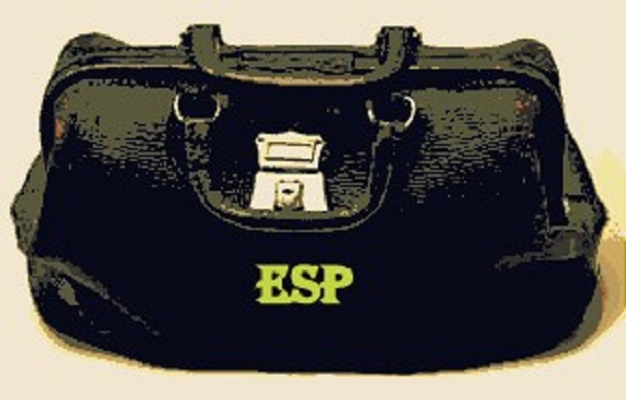Wheeling’s Dr. Earl S. Phillips had been the Minns’ family doctor for 20 years, seen the family through illness and injury, delivered Mabel and George’s first baby boy, performed all the regular health checkups, and remained a stable force in the little family’s lives. In 1950, he was helping Tom Minns keep a secret.
Even by mid-20th century medical practice standards, Dr. Phillips was an oddity as a general practitioner—he was an effective and much-loved lone wolf healer without the frills and flourishes of usual doctors. He had a simple but well-equipped office in a converted old Victorian townhouse on Fourteenth Street in Wheeling. He didn’t have a nurse, a receptionist, or a partner. Folks needing his attention simply showed up, took a seat in a roomy but worn waiting room furnished with huge cracked and crinkly green leather chairs and waited their turn on the honor system. A loud-ticking chiming anniversary clock stood on an old wooden tile-lined mantle in the room where his patients waited of when the office door would open, Dr. Earl appeared, and simply asked, “Who’s next?”
Behind that office door was one large room with a leather examination chair in one corner that had stirrups and could recline all the way back into a horizontal position. It was a contraption that mystified and intimidated children but certainly made them the focus of attention whenever they were asked to climb up into it for Dr. Earl’s inspection. The room smelled almost overwhelmingly of medical alcohol and was lined with glass door cabinets that held needles, weird-looking probes, medicines, and other remedies that Dr. Earl used to bring relief to the distressed. Dr. Earl’s huge industrial-grade gray metal desk stood in the room’s center. A simple side chair was where
patients sat to have their blood pressure taken with a big, desktop metered device connected to a standard blood pressure cuff. At the rear of the office there was a full bathroom with a pink porcelain sink, tub, and commode where his patents provided their urine specimens. Behind the bathroom was a mysterious room where Dr. Earl performed his own lab work.
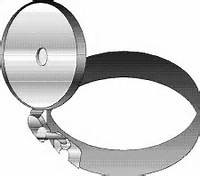
Dr. Earl had a deep, rich, soft, calming voice and he spoke in a distinct slow fashion that assured nervous patients that no matter what particular ailment afflicted them, he knew what to do. He would gently poke at his patients’ innards with stubby fingers; gaze down their throats, up their noses and in their ears; listen with his ever-present stethoscope; and always—always—performed a urinalysis no matter what the patent’s complaint. After making his determination, he would take a seat at his desk and calmly explain his diagnosis and suggested treatment. He wrote out prescriptions with a thick old fountain pen, but before putting pen to paper, he would make circular motions with his writing hand with the pen tip hovering just above the surface as if it helped him think about what he was going to write. His penmanship looked like calligraphy and delighted all the local pharmacists who never struggled to decipher it.
Almost every patient visit was interrupted at least once by a telephone call that Dr. Earl answered personally. He would listen to the medical complaint of the callers and dole out advice in the presence of in-office patients unhindered by the requirements of any “privacy act.”
No child ever left Dr. Earl’s office without a full-sized Hershey’s chocolate bar as a reward for brave behavior. They were not the little “fun size” candy bars, as they call them today. They were the full tilt, real McCoy gigantic candy bars that seemed to magically dry tears, calm nerves, and transform an anxious medical experience into a chocolate treat.
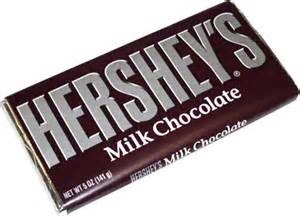
There weren’t health cards, health plans, credits cards, or elaborate forms to fill out at Dr. Earl’s. When patients asked the doctor how much for the visit, he would put his hands in his pockets, jingle change and just say, “Oh, let’s say five dollars,” and when his patient handed over the fee, he would simply shove the money in his pocket and escort the visitor out a side door. There was no way of knowing whether Dr. Earl charged according to ability to pay, but few patients ever complained about his rates.
He stood about five foot eight and was pear-shaped but not heavy. His hair was thinning on top, short and grey on the sides. He had a pencil-thin grey mustache and often wore bow ties. He was a living stereotype of a physician. He nearly always wore the head mirror that old-time physicians used to help direct reflected light into the eyes, noses and throats of the patents being examined. A stethoscope always hung around his neck.
He was a master of the house call. Throughout a career that would last into the 1970s, worried moms could count on Dr. Earl’s arrival at their home in any one of the big black Cadillacs he always drove during his decades as one of Wheeling’s busiest doctors. He carried a very serious-looking black leather doctor’s bag with ESP printed in gold across its side.
He treated sprained ankles, cuts, and colds and he was also an accomplished surgeon, removing tonsils, gall bladders, and appendixes. And, he delivered babies—lots and lots of babies. He worked closely with the Florence Crittendon home in Wheeling—a facility for unwed mothers—and helped hundreds of young women deliver healthy babies.
On September 23, 1947, he delivered Tom and Lizzie’s first grandson at Ohio Valley General Hospital. Mabel and George named him Terrill—Terry for short—and the child quickly became the center of Tom’s world. Now, three years later, Dr. Earl was treating Tom Minns for a potentially dangerous condition that the rest of the family did not know about.
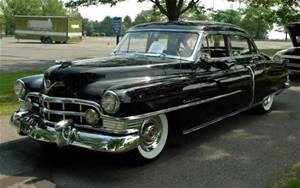
It was George who noticed it first. They were on the family’s very first vacation together in 1949, a free-wheeling drive across America with George at the wheel, Mabel in the front seat and Tom, Lizzie and baby Terry in the back. At one of their frequent roadside picnics, George took note of Tom’s badly swollen ankles and ashen skin tone.
“Are you okay Pap?” George asked after pulling his father-in-law aside. “I’ve never seen your ankles puffed up like this before.”
Tom waved him off with a simple reply.
“Too much riding in the car and not enough walking I reckon,” he answered.
Over the following months, George and Mabel began noticing that Tom’s usual high-energy activity had slowed and his frequently wrinkled brow indicated he was dealing with pain. Tom had complained of headaches and fevers and sometimes he broke out in a rash on his arms. Usually alert and always aware of his surroundings, Tom had sometimes showed signs of confusion.
But through it all, his enthusiasm for his grandson, Terry, never abated during those times of discomfort. Since Terry’s arrival, Tom had been almost a second mother. He never hesitated to deal with a diaper, administer bath or bottle, or rock the sleep-resistant infant for hours on end in the huge old rocking chair that had been in Lizzie’s family for three generations.
It wasn’t unusual for Tom to doff his fedora, take up his little bamboo cane and leave the house on Wood Street after announcing his intention to run some errands. So his visits to Dr. Earl went unnoticed.
“It’s your kidneys Tom, and it’s serious,” Dr. Earl explained after he first examined Tom in the office. “We call it Bright’s disease and there are a number of things we can do. You should use some abdominal compresses, adjust your diet to eat more vegetables and cut down on proteins and completely eliminate alcohol. Some people have gotten good results by drinking birch tea. There are also some things we can do to actually get your skin to start doing things to take the pressure off your kidneys like frequent hot baths and even warm water enemas.”
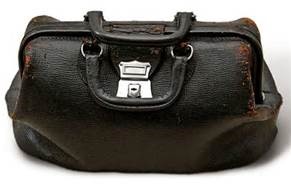
Bright’s disease was named after the English doctor who discovered it. Today, it is referred to as acute or chronic nephritis. It is a condition where the parts of the kidneys that are responsible for filtering become inflamed, causing blood and proteins to accidentally leak into urine. It was why Tom was fatigued and had headaches, back pain, and disorientation.
He was a meat and potatoes man all his life and a new diet that included more vegetables and less beef would be challenging, as would twice-daily hot baths, if he hoped to hide his condition from his family. Lizzie did indeed become suspicious of her husband’s sudden request for more green vegetables at dinner, as well as the uptick in bathing frequency, but when she inquired, the little Irishman just responded with a chuckle that he was trying to eat better and be cleaner in his old age. But, there was no hiding his lack of energy. He still played and rocked little Terry to sleep and even continued to get up when the baby cried at night so Mabel and George could sleep. In the mornings, he made his phone calls to sell brooms and mops, but by early afternoon, he had to have a nap—something he had never done in 33 years of marriage.
Lizzie and Mabel began to compare notes on their observations of Tom’s behavior and finally confronted him with their suspicions. The women grilled him mercilessly until he finally broke down and admitted his illness. They asked him why he was keeping his situation to himself.
“For 33 years I have kept this family going,” the 65-year-old blind man explained. “We made it through the flu outbreak during the Great War. We made it through the depression. We made it through George’s time away at war and we made it through times when we didn’t know where the rent would be coming from. We scrimped and saved just to have enough to keep you dressed well in school, Mabel. People didn’t think we could run a business or raise a daughter just because we were blind. I’ve been knocking down those challenges all my life and I am not going to be beaten by this one. Dr. Earl has told me what to do and I am doing it. I’m feeling better, honest. Trust me, I can handle this. There’s no need to be concerned. Everything will be okay.”
Of course, Tom couldn’t see the looks of concern on his family’s faces. He figured he had tamped down the concerns and life would carry on. But, Mabel, George and Lizzie kept a keen watch over his behavior and his energy levels and from then on, there would be no secret appointments with Dr. Earl. From now on Tom would be escorted by Mabel or George whenever he went to see the doctor.


